BY DAVID BROWN
Architekton—the future is on the drawing board
Sustainable structures begin with good designs. Architects and designers are using tools and techniques to create energy-conscious buildings for their clients, for the community, and the Earth.
Accordingly, Tempe-based Architekton has been thinking green since John Kane, FAIA, LEED AP, co-founded the firm in 1989. Much of their award-winning work has been in the public sector. The LEED Platinum certification-pending Tempe Transportation Center is a mixed-use three-story building, delivered in December 2008 in collaboration with Otak. The downtown building, a stop for the Valley’s light rail, local bus, and Arizona’s first bike station, includes a green xeriscaped roof and Tempe’s first greywater system.
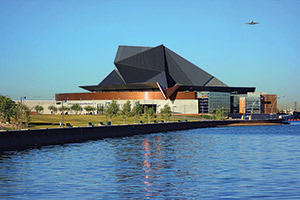 The city’s focal point, Tempe Center for the Arts, was also a collaborative design, with Barton Myers Associates Inc. Completed in September 2007, this transformation of a landfill into a lakeside park masterpiece is based on the ancient Anasazi’s Chaco Canyon Pueblo Bonita Great House and features triple-glazed windows to protect against both summer heat and runway-approach noise.
The city’s focal point, Tempe Center for the Arts, was also a collaborative design, with Barton Myers Associates Inc. Completed in September 2007, this transformation of a landfill into a lakeside park masterpiece is based on the ancient Anasazi’s Chaco Canyon Pueblo Bonita Great House and features triple-glazed windows to protect against both summer heat and runway-approach noise.
On the private side, The Lakes Residence was completed in June 2005 and incorporates a variety of green strategies, including a pre-engineered light-gauge recycled steel joist roof; passive evaporative cooling from the adjacent lake and pool as well as landscaping transpiration; and extensive daylighting.
“‘Green’ is embedded in our practices,” Kane said. “Many of the big early decisions that do not affect the project costs are becoming second nature to designers and even owners. The next level of work will be getting building codes and practices to align with more sustainable opportunities.”
Arizona pure custom—building responsibly
Formed in 2007 by Brendon Sarracino and Scott Holt, Arizona Pure Custom builds a number of sustainable strategies into its homes.
For one, the company uses local companies such as custom cabinet shops, door shops, and shops that buy stone from local sites.
“We believe true sustainability must always take into account where the products are coming from and how they are getting to the end user, our clients,” says Sarracino, who grew up in the construction and custom-homebuilding industries.
In addition, for remodels, Arizona Pure Custom re-uses as much material as possible and acquires recycled products. Any products that the homeowners do not want are donated to charitable organizations such as Habitat for Humanity to be used again – and not sent to a landfill.
“Too much lumber and re-usable materials are thrown away on jobsites every day,” he says. “The construction industry is very behind in its approach to recycling.”
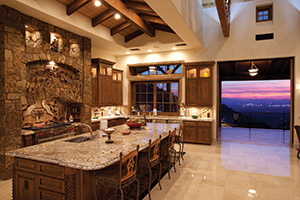 In general, the company buys sustainable products. “These typically cost more up front but will save homeowners money in the long run, due to the fact that they last longer and require less maintenance and upkeep,” he says. “It will also save them in replacement costs as well, such as installing high-efficient, high-SEER multiple-speed HVAC equipment.”
In general, the company buys sustainable products. “These typically cost more up front but will save homeowners money in the long run, due to the fact that they last longer and require less maintenance and upkeep,” he says. “It will also save them in replacement costs as well, such as installing high-efficient, high-SEER multiple-speed HVAC equipment.”
Sarracino adds, “Our purpose and passion is to build beautiful luxury custom home and relationships that last a lifetime with our clients. Our homes not only reflect the dreams and desires of our clients, but they are environmentally responsible at the same time.”
Phoenician pools — cool sustainable pools
For more than 20 years, Mike Ferraro, owner of Scottsdale’s Phoenician Pools, has been creating custom installations for homeowners and quality builders in the Scottsdale and Paradise Valley areas.
His pools include components such as high-efficiency pumps, solar arrays, and pool covers.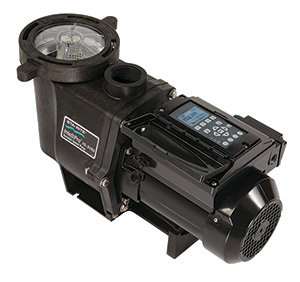
Pentair IntelliFlo® and IntelliPro® pumps can reduce energy use up to 90 percent – as much as $1,500 in utility costs annually – says Jonathan Allison, Arizona sales manager for Pentair.
He recommends solar energy systems to heat pools. “It makes sense to use solar to heat pools and spas because, once the system is paid for, there are almost no operating costs,” explains Michael Chung, sales director, sales trainer and solar installer for Phoenix-based Heliocol West, operating as Green Energy Solar, a company which Ferraro often works with.
Chung adds that solar arrays are available in a variety of colors to match homes and use the owners’ existing pool filter, exempting most installations from additional costs and taxes.
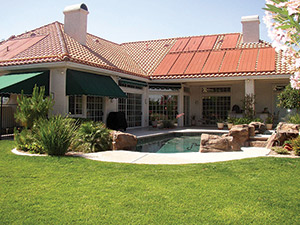 Pool covers not only provide safety, especially for children, they save energy as well, says Alan Stiles, principal of Tempe-based Arizona Pool Covers LLC, the exclusive Cover Pools distributor for Arizona. “Saving heat [by acting as a solar collector], chemicals, cleaning and extending equipment life, these covers quickly pay for themselves,” he explains, noting a savings of up to 70 percent on operating costs.
Pool covers not only provide safety, especially for children, they save energy as well, says Alan Stiles, principal of Tempe-based Arizona Pool Covers LLC, the exclusive Cover Pools distributor for Arizona. “Saving heat [by acting as a solar collector], chemicals, cleaning and extending equipment life, these covers quickly pay for themselves,” he explains, noting a savings of up to 70 percent on operating costs.
Roofstar—green to the rooftops
Your roofing decision – commercial or residential – can be a green one.
Gilbert roofing contractor Jeff Knudson says that one way to contribute to sustainability is to make roofing decisions as few times as possible. And, the best choice, if your budget allows, is metal. Quality metal roofing can require an average investment of $6.50 per square foot – about double that of traditional roofing. Metal construction products contribute to the sustainable design movement, explains Knudson, and they are energy-efficient and recyclable.
Depending on the gauge and quality of fasteners and manufacturing process, metal roofs last twice the life span of a traditional asphalt roof. Some copper roofs can offer up to a 100-year projected life.
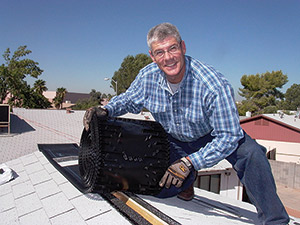 “When we tear down most roofs, the old shingles and sheathing go right to the landfill,” he says. In contrast, when metal roofs must be replaced, they are 100 percent recyclable – saving iron, ore, coal and limestone, used in the production of steel.
“When we tear down most roofs, the old shingles and sheathing go right to the landfill,” he says. In contrast, when metal roofs must be replaced, they are 100 percent recyclable – saving iron, ore, coal and limestone, used in the production of steel.
So, too, ENERGY STAR-approved metal roof systems have greater reflectivity than traditional systems: This makes for cooler structures that use less electricity for air conditioning, reducing pollutants and demand on the grid. These roofs can easily be fitted with solar arrays for onsite energy production. “In Phoenix, a popular type of metal roofing for residential applications is the embossed stone-coated steel products manufactured by Decra, Gerard or Metro,” Knudson says.






Thank you Green Living Magazine for a great article on Green Sustainability! I’ve worked with Mike Ferraro, from Phoenician
Pools for over 10 years helping his clients use Solar to Heat and Cool their Pools with almost no oeprating costs!
David M. Brown is a great feature writer!